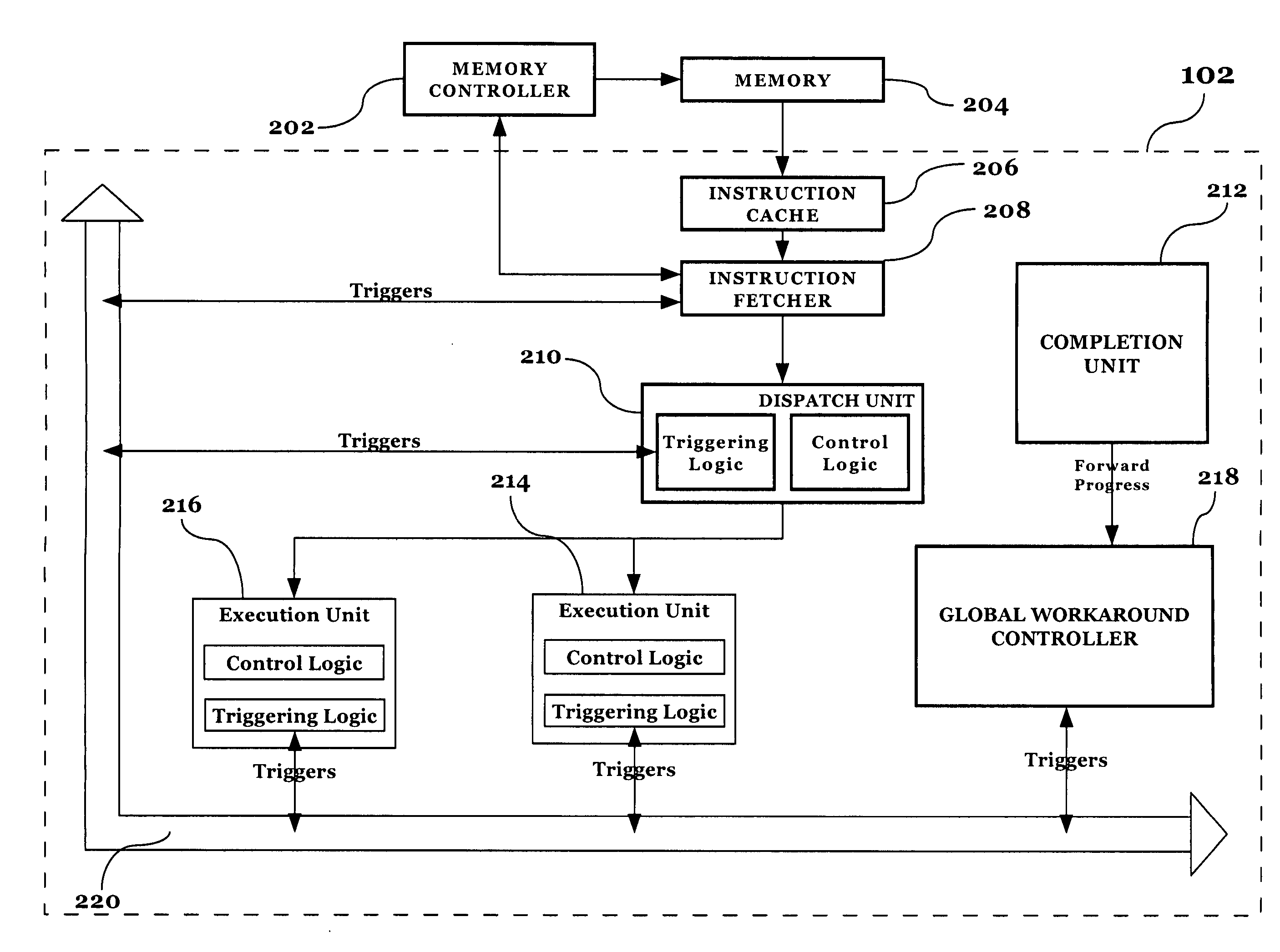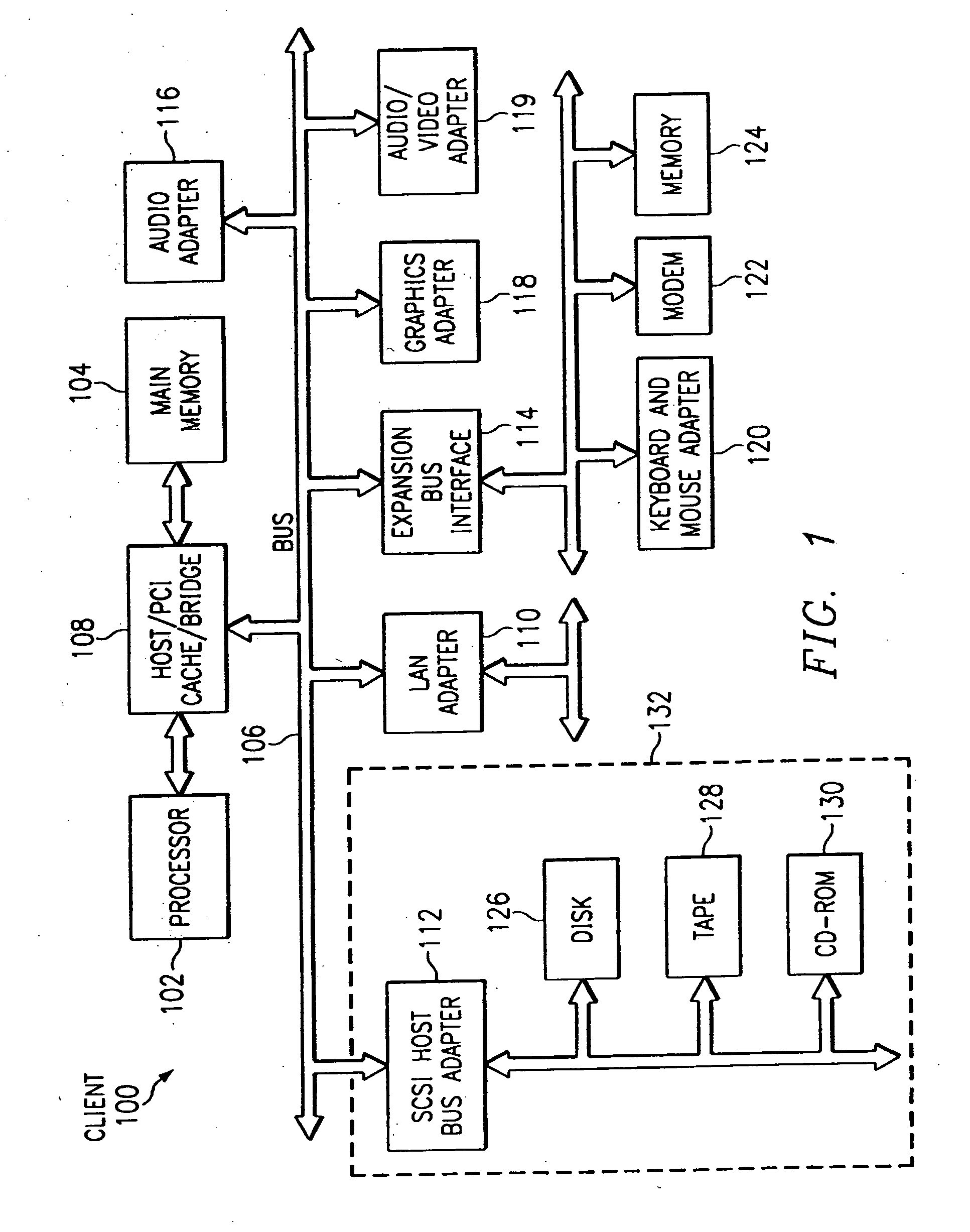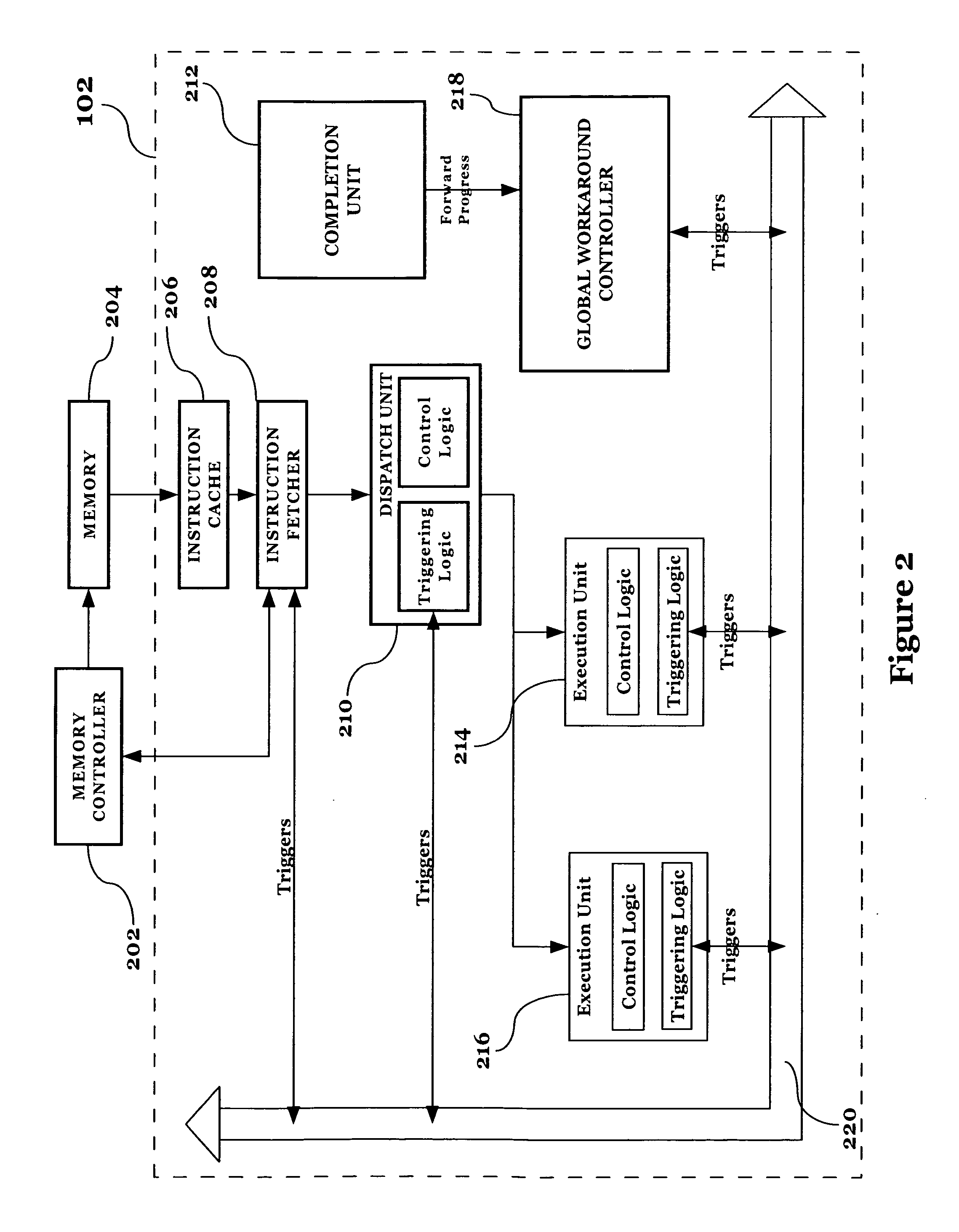Method of implementing precise, localized hardware-error workarounds under centralized control
- Summary
- Abstract
- Description
- Claims
- Application Information
AI Technical Summary
Benefits of technology
Problems solved by technology
Method used
Image
Examples
Embodiment Construction
[0017] With reference now to FIG. 1, a block diagram illustrates a data processing system in which the present invention may be implemented. Data processing system 100 is an example of a client computer. Data processing system 100 employs a peripheral component interconnect (PCI) local bus architecture. Although the depicted example employs a PCI bus, other bus architectures such as Accelerated Graphics Port (AGP) and Industry Standard Architecture (ISA) may be used. Processor 102 and main memory 104 are connected to PCI local bus 106 through PCI bridge 108. PCI bridge 108 also may include an integrated memory controller and cache memory for processor 102. Additional connections to PCI local bus 106 may be made through direct component interconnection or through add-in boards. In the depicted example, local area network (LAN) adapter 110, SCSI host bus adapter 112, and expansion bus interface 114 are connected to PCI local bus 106 by direct component connection. In contrast, audio a...
PUM
 Login to View More
Login to View More Abstract
Description
Claims
Application Information
 Login to View More
Login to View More - R&D
- Intellectual Property
- Life Sciences
- Materials
- Tech Scout
- Unparalleled Data Quality
- Higher Quality Content
- 60% Fewer Hallucinations
Browse by: Latest US Patents, China's latest patents, Technical Efficacy Thesaurus, Application Domain, Technology Topic, Popular Technical Reports.
© 2025 PatSnap. All rights reserved.Legal|Privacy policy|Modern Slavery Act Transparency Statement|Sitemap|About US| Contact US: help@patsnap.com



